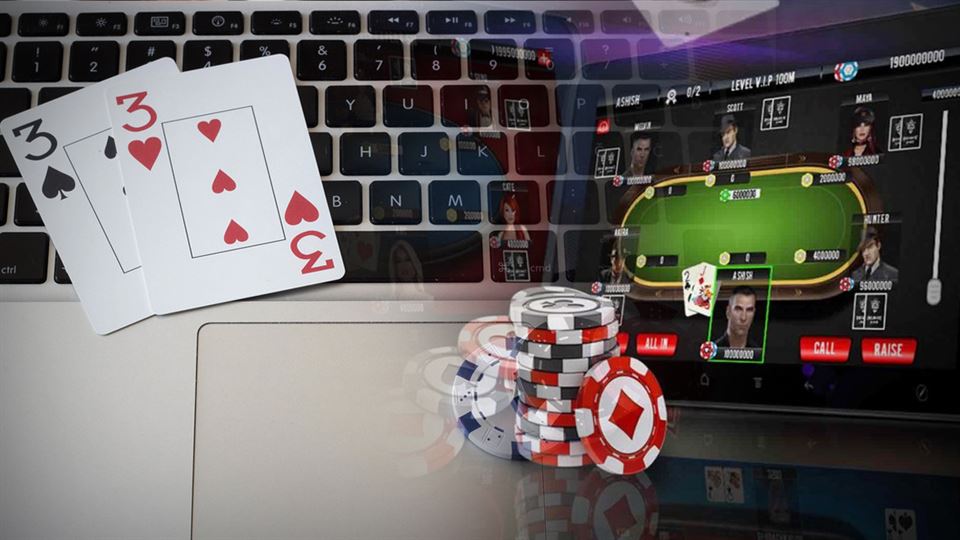Texas Holdem poker is the most popular form worldwide for several reasons. One reason is that it is easy to learn. You can learn the basic rules in a few minutes, and even people who have never played poker can play Holdem within an hour. Another reason Texas Holdem is so popular is that it is an exhilarating game. There is a lot of action, and players can win or lose a lot of money quickly. Finally, Texas Holdem is popular because it is easy to find games to play. Millions of people play Holdem online, so games are always available throughout the day. Whether you are looking for a casual game with friends or want to compete for large prizes, Holdem is the perfect game for you.
If you want to win big, consider playing poker tournaments. While they offer ridiculous prize pools, collecting a big payout is challenging since you must consistently play well enough to make it to the final table. Tournaments require vastly different strategies from cash games, and one essential concept is adjusting your strategy to the changing stack sizes throughout the tournament. This poker guide will go in-depth about that with an explanation of how stacks work and tips for tailoring your game plans accordingly!

What are stack sizes?
In poker, the stack size is the total number of chips that a player has available to bet. The stack size can vary depending on the game and betting structure. For example, in a cash game, each player may have a stack of 100 chips, while in a tournament, each player may start with 1,000 chips. Stack sizes are measured relative to the size of the blinds. Generally, small stack sizes are 40 big blinds or less, medium stack sizes are anywhere from 41 – 90 big blinds, big stack sizes are 90 big blinds and above, and deep stacks are over 200 big blinds. Your starting cash game stack size depends on you, but most sites limit it to within 10 – 100 big blinds. In tournaments, everyone starts with the same stack size, but with constantly changing blinds and a larger amount of players, there is far more variety in stack size than in cash games.
Why are stack sizes significant?
Stack size has a significant impact on the psychology and strategy of the game. A player with a large stack tends to be more aggressive and play more hands. This is because they have the chips to back up their betting and can afford to take more risks. Players tend to be conservative and tight with a small stack, only playing the best hands. This is because they cannot afford to lose many chips and must preserve their capital. Stack size also affects bluffing in poker. A player with a large stack can afford to make more enormous bluffs with a higher chance of being called. However, when a player has a small stack, they need to be more careful with their bluffs since one wrong move could cost them their tournament life. As such, stack size is an essential factor in the psychology and strategy of poker.
Stack sizes and implied odds
Stack sizes in poker significantly affect implied odds. The bigger the stack sizes, the greater the potential reward. When you are playing with deep stacks, it can be profitable to play more, drawing hands like pocket pairs in the hopes of a set or suited connectors. You have more money to work with before breaking, and the implied odds are much better, so you will likely get paid even more when you hit a draw.

Adjusting your strategy: Short-stacked players
Short-stacked players in poker can be tricky opponents to play against. On one hand, they don’t have many chips, so they’re less likely to make big bets that could put you at risk. On the other hand, they could also be desperate and make moves you wouldn’t expect. So, how do you play against short-stacked players? The key is to be patient and wait for them to make mistakes. If they’re constantly betting small amounts, don’t be afraid to call their bluffs. They’ll eventually have to put their chips in the pot, and you’ll have a chance to take them down.
Similarly, if they’re raising preflop but not following through on the flop, they’re probably bluffing. Again, just call and wait for them to make a mistake. The key is to be patient and wait for their mistakes. Eventually, you’ll be able to capitalize and take their chips.
Adjusting your strategy: Deep-stacked players
Deep-stacked players can also be challenging to predict, as their deep stacks give them more leeway and the ability to make risky plays. You generally want to focus more on your own stack size because of the concept of effective stack sizes. The only stack size that matters is the smallest in the game, as you cannot force your opponent to put more than their current stack size into the pot, and even if you had more chips, you would not bet more than your opponent’s stack size anyway.

Where to play if you dislike physical tells
As the tournament progresses and you encounter changing stack sizes, you must adjust your playstyle accordingly. The tips in this article should help you stay ahead of the competition as the stakes get higher and the table gets smaller. If you want to practice your skills, sign up at the world’s largest poker room, with a comprehensive variety of online poker real money games in every format on GGPoker!




